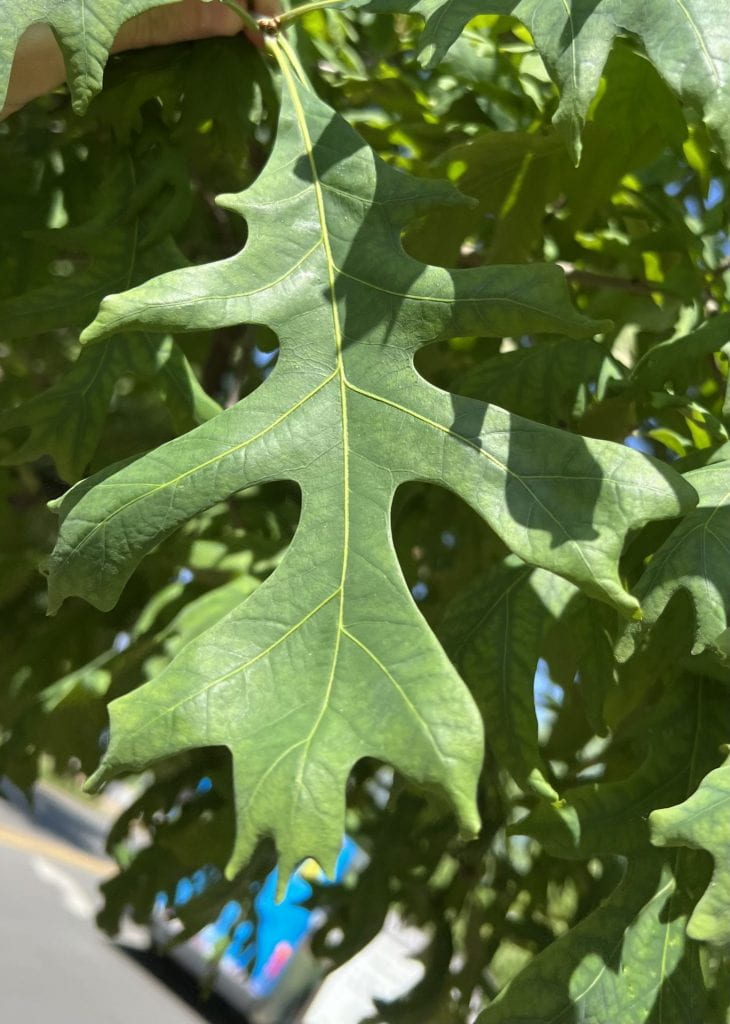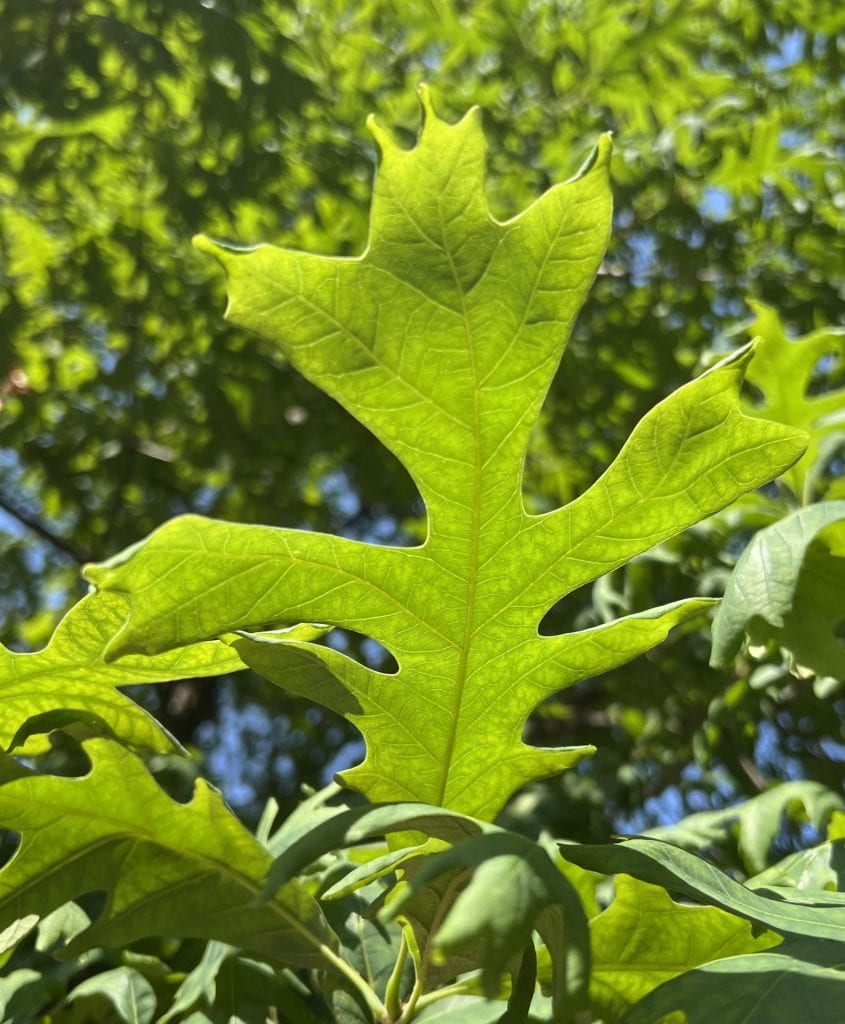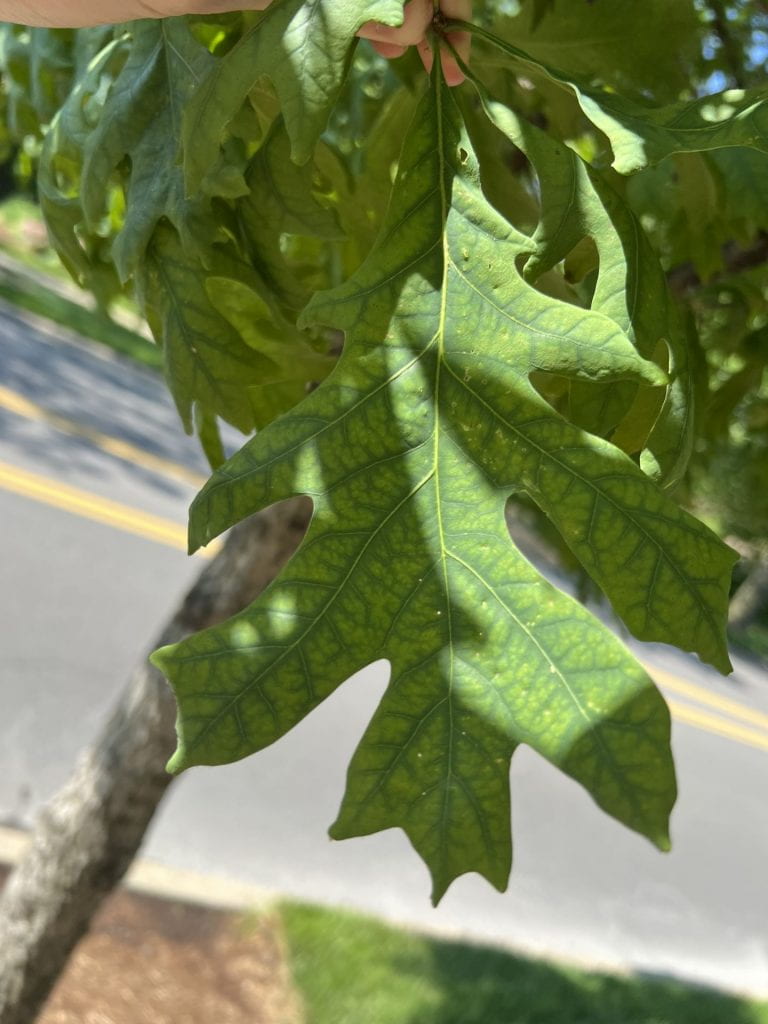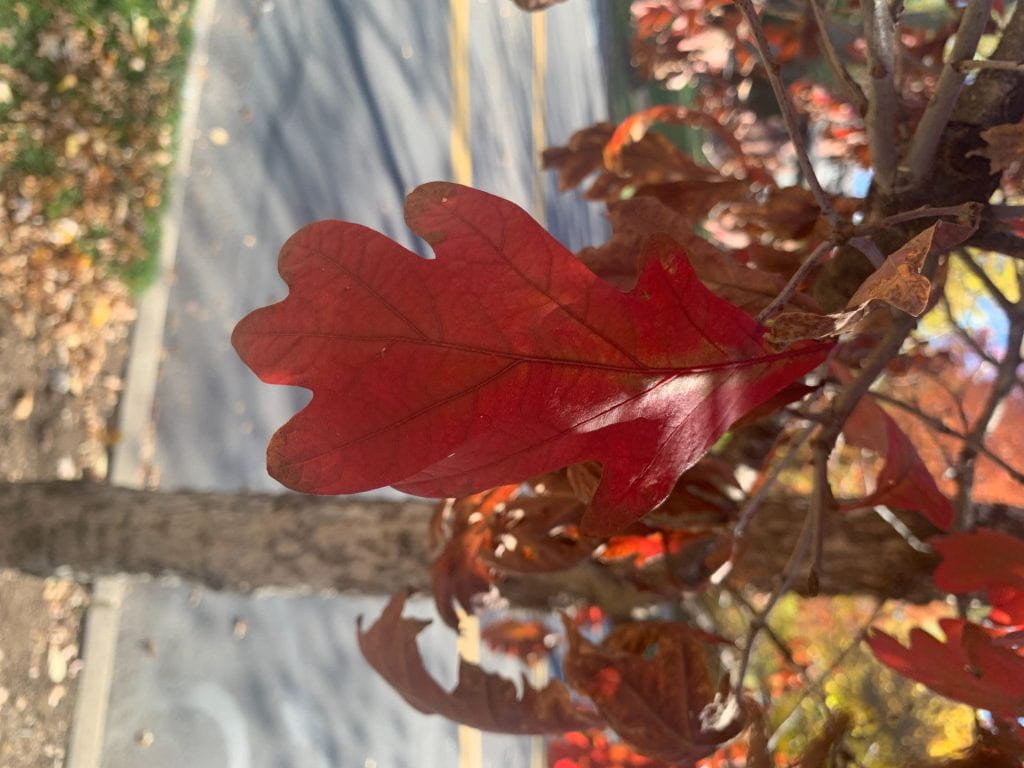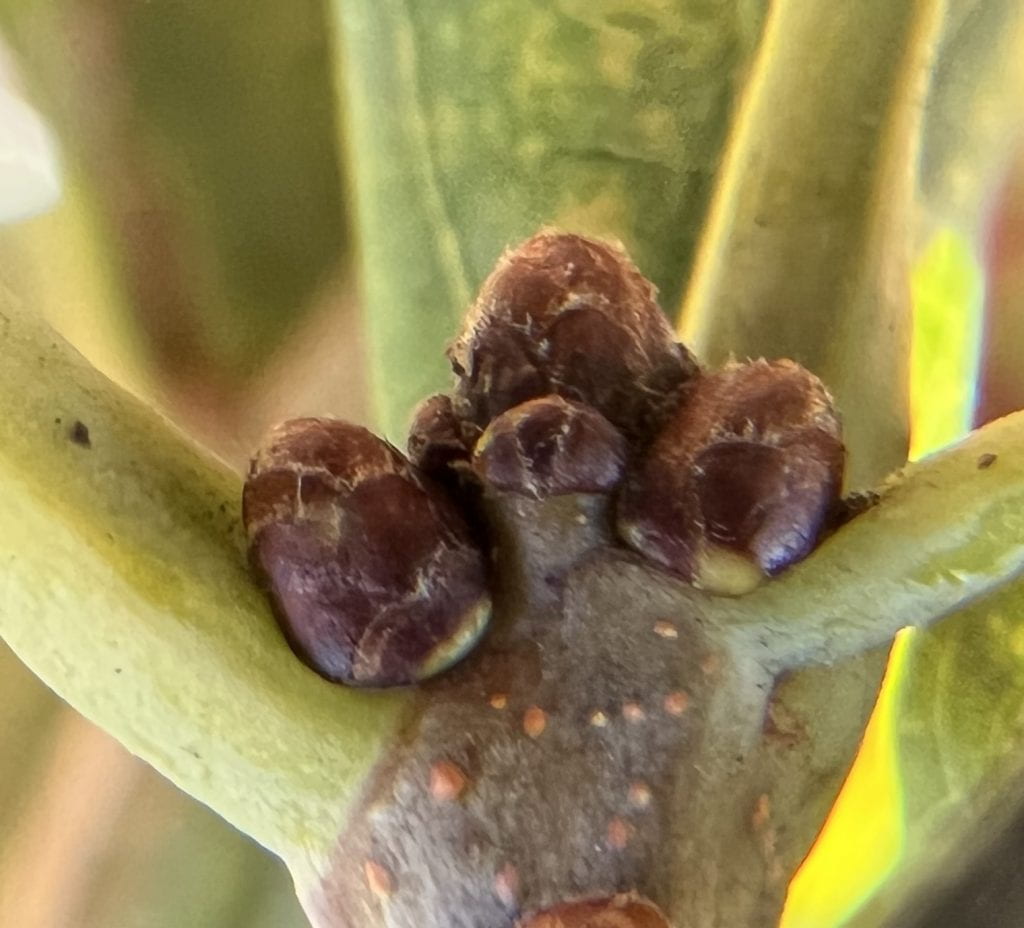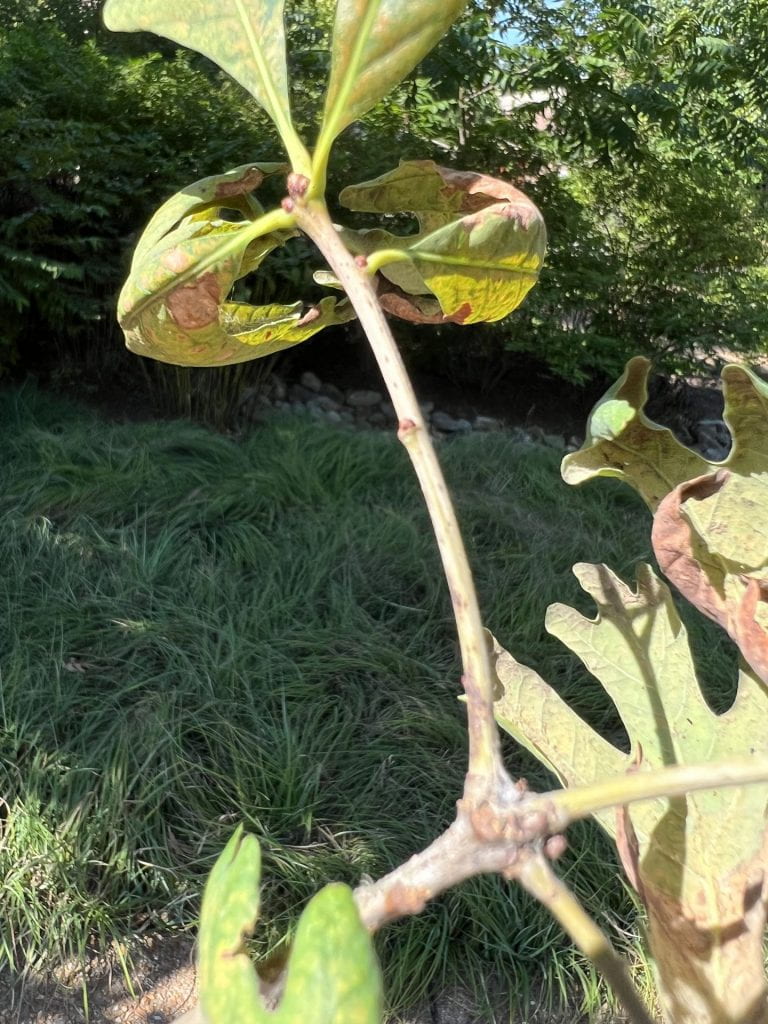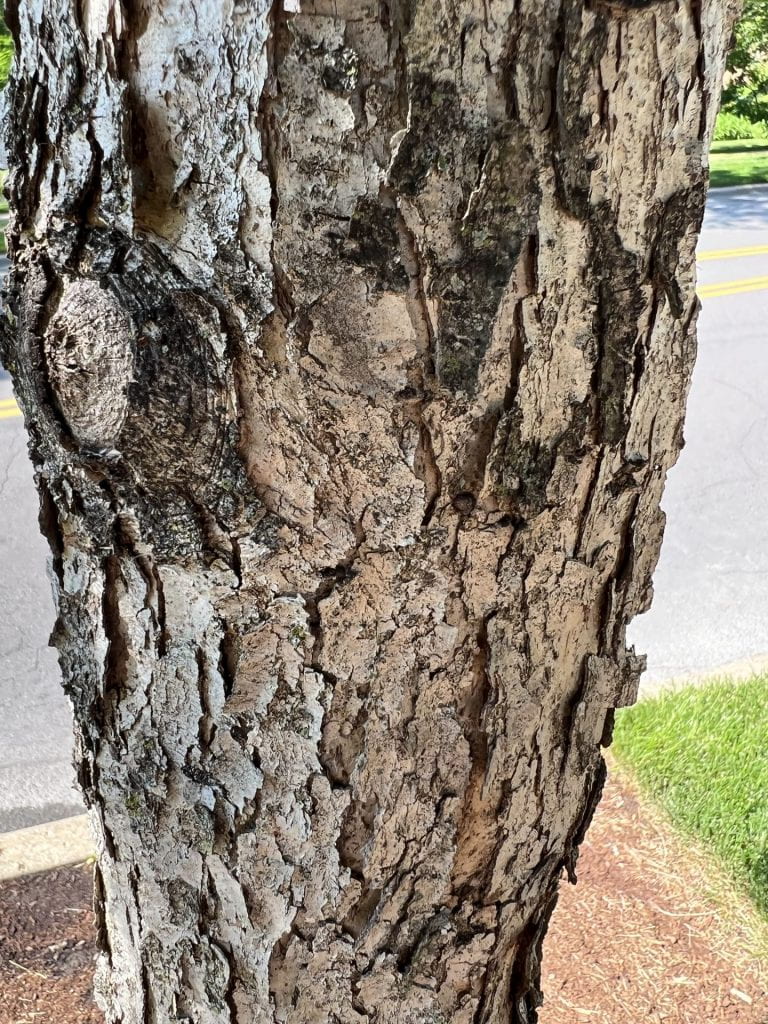Leaf Identification
The leaves of the White Oak are simple (no leaflets), alternately arranged on the stem, pinnately veined, and lobed. There are 7-9 moderately to deeply divided rounded, finger-like lobes. The leaf shape is elliptic to slightly obovate, and 5″-9″ in length. The leaves are green above and yellow-green below, turning yellow or red in the fall.
Twig and Bud Identification
The twig is gray-brown, not zig zag, and smooth. The terminal buds are many-scaled and clustered, with three or more buds per cluster.
Bark Identification
The bark is light gray-brown and covered in thin plates, which will occasionally flake.
Fruit Identification
The fruit of the White Oak is an acorn. The acorn is nearly globular or elliptic, up to 1″ long, with a thick cap-like cup of warty scales that may be tall but does not cover much of the nut. The acorn matures in the fall.
Flower Identification
The flowers of the White Oak are monoecious (male and female flowers exist separately but on the same tree). The staminate (male) flowers are hanging green or greenish-red catkins (long, slender clusters of unisexual flowers), and the pistillate (female) flowers are inconspicuous and in small clusters on the leaf axils. The flowers bloom in spring.
Oak ID Tips
- The White Oak has a leaf that is slightly longer than the Swamp White Oak leaf, and the lobes of the White Oak are more deeply divided. As well, the Swamp White Oak has a much paler leaf underside, and has less flaky, darker bark than the White Oak
- The White Oak looks very similar to the non-native English Oak. In a landscaping setting where the English Oak may be planted or naturalized, the White Oak can be distinguished by its significant petiole (the English Oak petiole is quite short) and its tapering, pointed base (the English Oak often has an auriculate [ear-lobed] base). The English Oak bark is not flaky.
